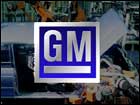|
GM: Sales estimate too low
|
 |
January 7, 2002: 6:40 p.m. ET
CEO of world's largest automaker believes sales may exceed forecasts.
|
DETROIT (CNN/Money) - While General Motors Corp. has joined the chorus of automotive analysts and competitors in forecasting about a 10 percent drop in auto sales this year, the CEO of the world's largest automaker says he believes those estimates will end up being too low.
Richard Wagoner told reporters at the North American International Auto Show here that economic models used by the industry to predict sales have consistently come in lower than actual sales during the last five years, and he won't be surprised if that happens again this year.
The official statement from GM analysts last week called for U.S. light vehicle sales of 15 million to 15.5 million this year, down from the 17.2 million last year.
"Why is every year the industry [sales] figure bigger than what we tell you it's going to be at the beginning of the year?" Wagoner said Monday. "Obviously the traditional models are not working. Is that going to continue indefinitely? I don't know. I suspect so. Why is it up? A lot of wealth in the U.S. economy [and] vehicle prices relative to that wealth are the lowest they've been in 20 or 30 years."
Wagoner made the comments when asked about how many of GM's sales during a zero-interest financing incentive offer in the fourth quarter would otherwise have been made in the first half of this year.
The exceptionally strong fourth-quarter sales are part of the reason analysts have lowered forecasts for 2002 sales, and Wagoner said he believes half to 75 percent of the increased sales due to the incentive offer that began the last week of September would otherwise have come in 2002.
Wagoner said that consumer response to the zero-interest incentive, which was matched by competitors, surprised even GM (GM: Research, Estimates). Because GM did not increase capacity in anticipation of the sales level, it ended 2001 with significantly lower inventory.
"We started that program not frankly expecting beyond our wildest dreams that it would be so successful," he said. The 250,000-to-300,000 drop in vehicle inventory, coupled with much higher-than-desired inventories at the end of 2000, is the reason GM plans to build more cars and trucks this quarter than it did in the first quarter a year ago, despite a weaker market.
In other comments, Wagoner said he still believes GM will complete its planned purchase of troubled Korean automaker Daewoo, although he said he couldn't comment on reports that GM has discovered additional debt problems at Daewoo that weren't disclosed earlier. He said GM is closely monitoring Daewoo's efforts to win changes in its labor agreements, and that it is pleased by Daewoo's product development plans.
"We think it's a good deal to do, but it's got to be the right deal for us," he said about current negotiations. "This discovery process has not all been less opportunities. Some of it has been more opportunity."
GM is the world's largest steel customer, and buys almost all of its steel for North American production from North American steelmakers. Many of the leading steelmakers, including U.S. Steel Group, Bethlehem Steel and National Steel, are discussing a broad multi-company consolidation to deal with mounting losses and competition from overseas steelmakers as well as nonunion U.S. steelmakers.
Wagoner said that GM is concerned about any move that could lead to higher steel prices, although its steel needs are covered by long-term contracts that limit any hikes due to industry consolidation. And he said GM did not have any particular problem with a broad consolidation of the segment.
"We're sensitive to the problems and challenges of the steel industry," he said. "We're watching developments there. If they can come up with a structure by which they are more competitive and can put resources necessary in research and quality, that could be a plus for us. We're a little sensitive towards the cost pressures we face, though." 
|
|
|
|
|
 |

|

